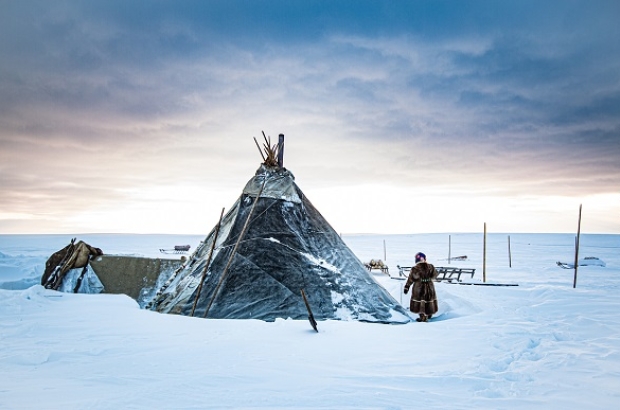- Daily & Weekly newsletters
- Buy & download The Bulletin
- Comment on our articles
Belgian film explores reindeer herders' fight for survival in Siberian gas fields
Following ancient routes carved across the frozen tundra, enormous herds of reindeer are driven by the Nenets, an indigenous people of Siberia. Today their ancestral way of life is under threat, as the Yamal Peninsula they call home is the source of 80% of Russia’s gas, now under massive exploitation.
Gaz russe, La dernière route des nenets (NENETS VS GAS) by Belgian filmmaker Sergio Ghizzardi travels to the heart of the conflict between this nomadic people and global industrialisation.
Brussels-based Ghizzardi told The Bulletin how his crew overcame successive challenges, including Covid and the Russia-Ukraine conflict, to tell the Nenets’ story.
He lived with the nomads during freezing conditions as they undertook their annual Arctic migration. From joining in traditional customs such as drinking reindeer blood to sleeping communally in animal hide tents – known as chums – it was a life-changing experience.
With an extensive background in filmmaking, Ghizzardi was initially drawn to political subjects in his career, “to understand the capacity and limitations of politicians to change the world”.
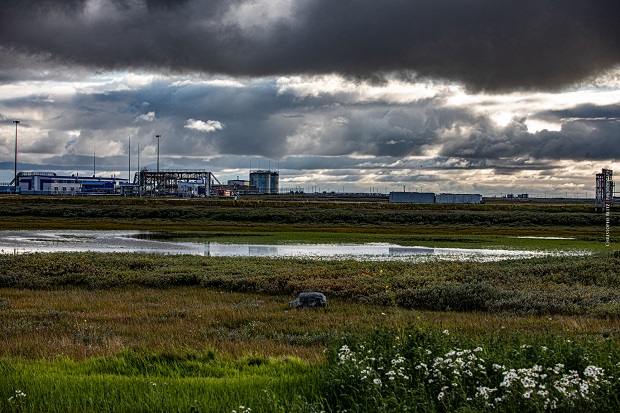
He then turned his camera to economic crises, immigration and globalisation before exploring the energy sector. “It’s the backbone of everything,” he says. “If you want to understand how your part of the world works, you have to understand energy.”
This point is powerfully brought home in the film when a map shows how Russian liquified natural gas is increasingly transported to the Belgian port of Zeebrugge. While Europe has restricted Russian gas exports since the invasion of Ukraine in early 2022, there is no such embargo on LNG.
Although Ghizzardi has long been interested in biofuels renewable energy, he only learned by chance of the Nenets’ struggle as state-owned energy multinational Gazprom started extracting the planet’s biggest gas reserves. The environmental fallout of this project, expected to endure for 100 years, has major consequences beyond threatening the people’s existence.
“From the beginning, I wanted to present a real confrontation. I had this feeling of the nomadic journey,” says Ghizzardi. For 200 generations, the herders have moved their reindeers – on whom they depend for their livelihood – over 700km, from summer pastures in the north to winter pastures in the south. For them, this permafrost peninsular is “the end of the world”.
“It’s a cycle that speaks about the importance of their relationship with the world,” he says. “The lichen grows only 3mm a year. They need to move because if they stay too long, it becomes a desert.”
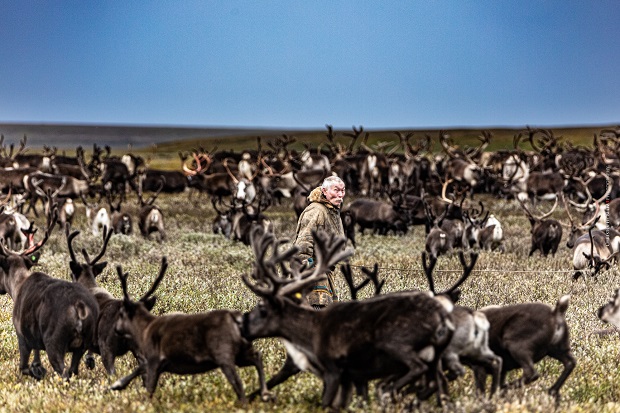
Highlighting the disparity between the Nenets’ dying traditions and Gazprom’s complex incursions in the region was a priority for him: “I thought this contrast between the two journeys would make viewers think about the world and the energy use of our civilisation.”
Ghizzardi shows the positive and negative effects of globalisation, from helicopter access and satellite navigation to the Nenets’ skidoos and generators. Another priority was to underline the environmental impact of industrialisation, as millions of tonnes of carbon dioxide are released into the atmosphere.
With temperatures plummeting to -50°, rivers to be crossed and gas pipelines to be navigated, the annual nine-month drive requires an extremely regimented work ethic.
Ghizzardi and his team experienced this for themselves when they joined one of the Nenets’ top brigades: “We were their guests and they were happy to invite us into their lives.” They also experienced the hardship of life in the tundra. “There was no privacy; we slept 15 in a tent with three drops of water daily to wash your face,” he recalls with a laugh.
The daily diet centred on reindeer meat, often raw for maximum protein, with a knife provided to slice off slithers of carpaccio. The animals were strangled before being butchered so the herders could drink their blood to maintain iron levels. “We joined in but after a few days, it got too much for me,” admits Ghizzardi, who nevertheless found reindeer heart a delicacy.
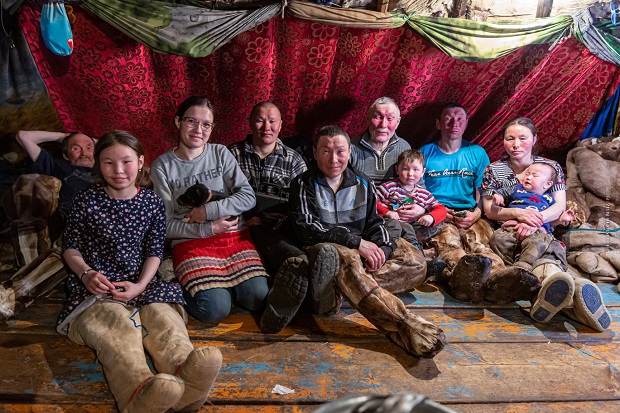
Otherwise, it was largely a regime of reindeer broth, “breakfast, lunch and dinner”, with occasional and welcome raw white fish, served sashimi style.
The extreme temperatures mean the Nenets need to eat every six hours, with the men working outdoors in six-hour shifts to keep the reindeer under control, lassoing and herding them into corrals.
In one sequence, a woman comments on the men’s reliance on the women to feed them and repair their clothes so they can survive in the extreme cold, as well as keeping the cooking fires burning.
“In the tundra, a man without a wife is no longer a man. He cannot live without here,” she says. “But a woman without a man, say for example he dies, will survive easily. She knows how to do everything.”
One ongoing hardship for the vibrant community is separation from their school-age children. They are educated at a large boarding school in Yar-Sale, as modern as any European school in Brussels, says Ghizzardi. The experience in Siberia was demanding for the film crew, with technical problems such as fogged camera lenses due to the freezing weather, and the project also encountered other setbacks.
Some of the shooting was delayed due to Covid travel restrictions. And Ghizzardi had been counting on filming Russian icebreakers in pack ice waters to highlight how their success risked speeding up the extinction of the ancient nomadic route – but plans had to change
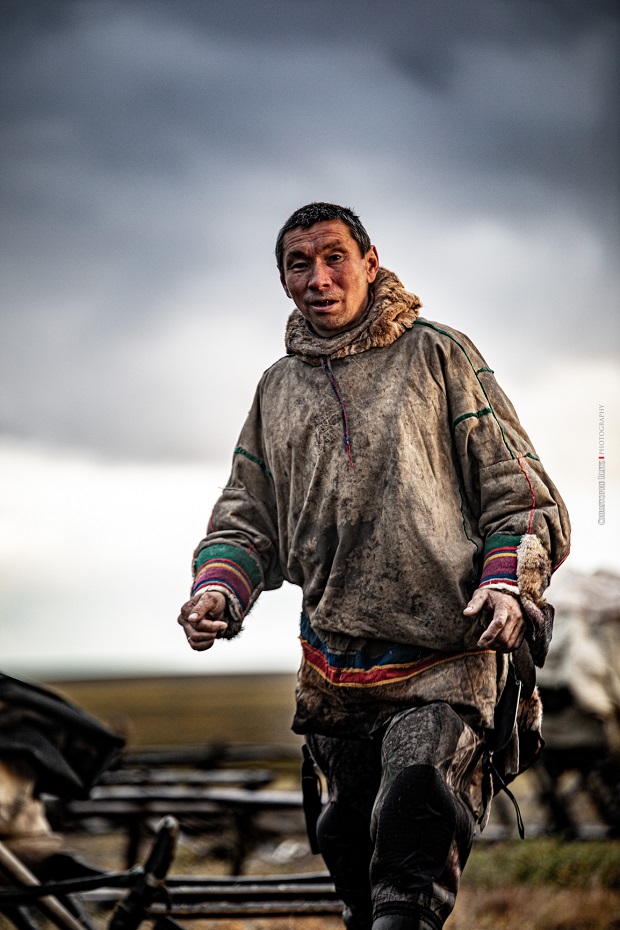
“After months of negotiations, we were due to pick up our Russian visa from the consulate. Then the Ukraine war started and they found some articles about the film criticising Russian policy. We no longer had access,” he says.
To represent the icebreakers, the symbol of the north east maritime route that ensure shipping access to the East via the Bering Strait, he resorted to animation scenes.
But there were also lucky breaks, including camera access to a Gazprom conference in St Petersburg. Ghizzardi interviewed a new deputy captain in the nuclear-powered icebreaker fleet, her role all the more impressive for being a woman under 30. “We were the only Westerners present and they were openly speaking; we didn’t expect that.”
For another shoot, their travel papers hadn’t been authorised. Fortunately, Ghizzardi had boxes of royal warrant Belgian chocolates in his luggage that sweetened the bureaucratic path.
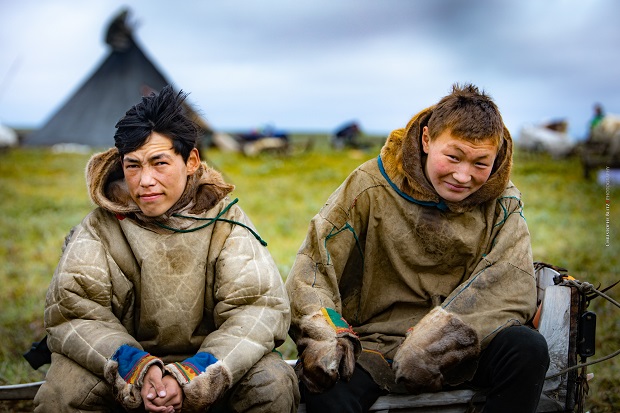
Ultimately, his aim in portraying the indigenous community’s predicament is to invoke questions about the environment. “We are killing these societies who have solutions,” he says. “We have to think about our relationship with nature and the way we use energy. As someone once told me, the best energy is the energy we don’t use.”
The Nenets’ story is compelling because of the film’s dramatic cinematography: sweeping landscapes of humans pitted against nature and industry. “We wanted a documentary that was powerful in terms of images, both in winter and summer. It’s why it’s best seen on a big screen.”
Gaz russe, La dernière route des nenets (NENETS VS GAS): English-language preview at Cinema Aventure on 15 January at 19.00 in the presence of Ghizzardi. Sorry! Our prize giveaway has now closed and the winners have been notified.











